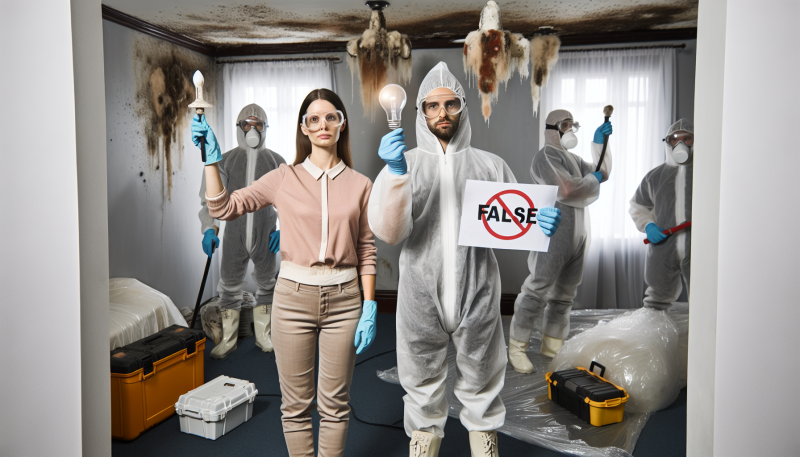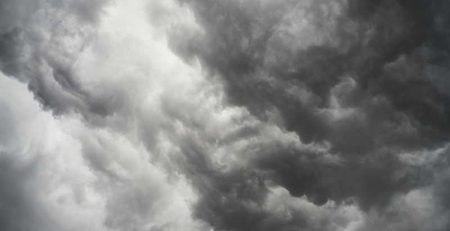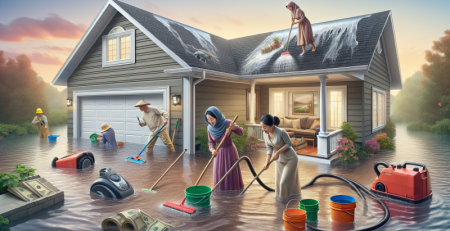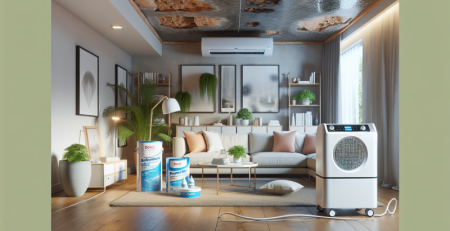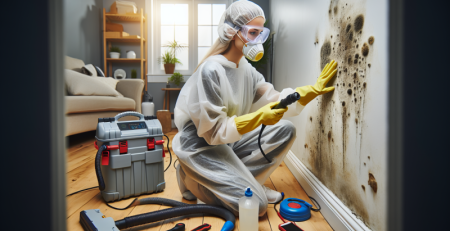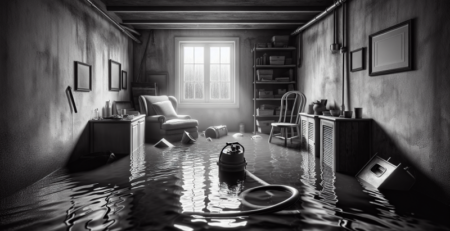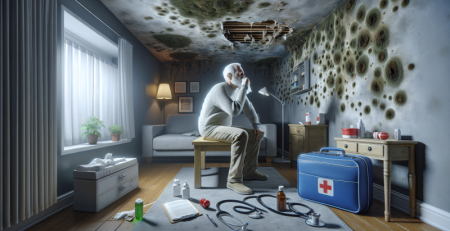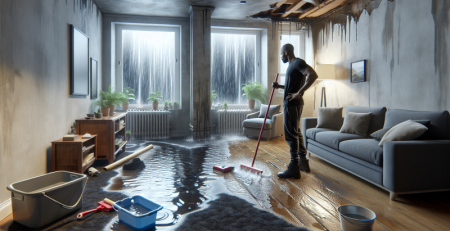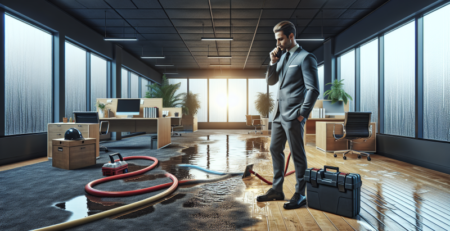Mold Remediation: Common Myths Debunked
Mold remediation is a critical service for homeowners and property managers, but it’s often surrounded by misconceptions that can lead to ineffective treatments and persistent problems. At Kraus Restoration, NJ’s leaders in water damage, we understand the importance of addressing mold issues accurately and efficiently. Our mission is to help those who’ve experienced property damage or loss due to water, flood, mold, fire, or smoke, and to restore their homes and lives back to normal. With our 24/7 emergency services, we provide professional and immediate assistance for all types of damage and restoration needs.
In this blog, we will debunk some of the most common myths about mold remediation, shedding light on the realities of mold cleanup and the importance of professional intervention. Whether you’re dealing with stormwater runoff, sewage backup, or freeze-damaged plumbing, our IICRC certified experts are equipped to handle any water damage issue, ensuring thorough mold remediation. Our comprehensive services also include fire cleanup, smoke, and soot damage repair, making us your one-stop solution for property restoration in Central and Northern New Jersey.
By addressing these myths, we aim to provide you with accurate information and peace of mind, knowing that Kraus Restoration is here to help you every step of the way. For more information or to schedule an inspection, visit our website or contact us directly. Trust Kraus Restoration to handle the tough work and restore your home to its pre-damaged condition.
Understanding the Truth About Mold Growth
Mold Remediation: Common Myths Debunked
Mold growth is a topic that often stirs up a lot of misconceptions and myths. Understanding the truth about mold growth is crucial for effective mold remediation and ensuring a healthy living environment. This section aims to shed light on the realities of mold growth, debunking common myths and providing accurate information to help you make informed decisions.
What is Mold?
Mold is a type of fungus that thrives in moist environments. It reproduces through tiny spores that travel through the air. When these spores land on damp surfaces, they can begin to grow and spread. Mold can be found both indoors and outdoors, and while some types of mold are harmless, others can pose serious health risks.
Common Myths About Mold Growth
Myth 1: Mold Only Grows in Dirty Homes
One of the most pervasive myths about mold is that it only grows in dirty or poorly maintained homes. In reality, mold can grow in any environment that provides the right conditions—namely moisture and organic material. Even the cleanest homes can fall victim to mold if there is a water leak, high humidity, or poor ventilation.
"Mold can grow on virtually any substance, providing moisture is present. There are molds that can grow on wood, paper, carpet, and foods." – Environmental Protection Agency (EPA)
Myth 2: Bleach Kills Mold
Many people believe that bleach is an effective solution for killing mold. While bleach can remove surface mold, it does not penetrate porous materials like wood or drywall. This means that the mold can continue to grow beneath the surface, eventually resurfacing. For effective mold remediation, it’s essential to use specialized products designed to eliminate mold at its root.
Myth 3: Small Amounts of Mold Are Harmless
Another common misconception is that small amounts of mold are not a cause for concern. However, even minor mold infestations can pose health risks, especially for individuals with allergies, asthma, or weakened immune systems. According to the Centers for Disease Control and Prevention (CDC), exposure to mold can cause symptoms such as nasal stuffiness, throat irritation, coughing, and skin irritation.
The Science Behind Mold Growth
Understanding the science behind mold growth can help you take proactive measures to prevent it. Mold requires three main conditions to thrive:
- Moisture: Mold needs water to grow. This can come from leaks, flooding, high humidity, or condensation.
- Food Source: Mold feeds on organic materials such as wood, paper, and fabric.
- Suitable Temperature: Most molds grow best in temperatures between 60-80°F (15-27°C).
By controlling these factors, you can significantly reduce the risk of mold growth in your home.
Preventing Mold Growth
Preventing mold growth involves addressing the conditions that allow it to thrive. Here are some practical steps you can take:
- Control Moisture: Fix leaks promptly, use dehumidifiers in damp areas, and ensure proper ventilation in bathrooms and kitchens.
- Use Mold-Resistant Products: When building or renovating, consider using mold-resistant drywall and paint.
- Regular Inspections: Regularly inspect areas prone to moisture, such as basements, attics, and bathrooms, for signs of mold.
Professional Mold Remediation
While DIY methods can be effective for small mold problems, larger infestations often require professional intervention. Professional mold remediation services use advanced techniques and equipment to thoroughly remove mold and prevent future growth. If you’re dealing with a significant mold issue, it’s advisable to seek professional help.
For more information on professional mold remediation services, visit our mold cleanup page.
Conclusion
Understanding the truth about mold growth is essential for effective mold remediation and maintaining a healthy living environment. By debunking common myths and providing accurate information, we hope to empower you to take proactive measures against mold. Remember, mold can grow in any home, and even small amounts can pose health risks. If you’re dealing with a mold problem, don’t hesitate to seek professional help.
For more information on our services, visit our services page. If you have any questions or need assistance, feel free to contact us.
References
- Environmental Protection Agency (EPA). “A Brief Guide to Mold, Moisture, and Your Home.” [EPA](https://www.epa.gov/mold/brief-guide-mold-moisture-and-your-home).
- Centers for Disease Control and Prevention (CDC). “Facts About Mold and Dampness.” [CDC](https://www.cdc.gov/mold/dampness_facts.htm).
- American Industrial Hygiene Association (AIHA). “Facts About Mold.” [AIHA](https://www.aiha.org/public-resources/consumer-resources/topics-of-interest/what-you-need-to-know-about-mold).
By understanding the realities of mold growth and debunking common myths, you can take effective steps to protect your home and health.
Effective Mold Remediation Techniques Explained
Mold remediation is a critical process for maintaining a healthy living environment, especially in areas prone to moisture and humidity. Despite the importance of mold remediation, several myths persist that can mislead homeowners and property managers. By debunking these myths and explaining effective mold remediation techniques, we can better understand how to tackle mold issues efficiently and safely.
Understanding Mold and Its Impact
Mold is a type of fungus that thrives in damp, humid environments. It can grow on various surfaces, including walls, ceilings, and floors, and can cause significant damage to property. More importantly, mold can pose serious health risks, particularly for individuals with respiratory issues, allergies, or weakened immune systems. Symptoms of mold exposure can range from mild allergic reactions to severe respiratory problems.
Common Myths About Mold Remediation
Before diving into effective mold remediation techniques, it’s essential to address some common myths that can hinder proper mold management:
-
Myth: Bleach Kills Mold Completely
- Reality: While bleach can kill surface mold, it does not penetrate porous materials like wood or drywall. Mold roots can remain and regrow if not properly treated.
-
Myth: Mold Remediation is a DIY Job
- Reality: While minor mold issues can sometimes be handled by homeowners, significant mold infestations require professional intervention. Professionals have the expertise and equipment to handle mold safely and effectively.
-
Myth: Mold Only Grows in Wet Areas
- Reality: Mold can grow in any area with sufficient moisture, including areas with high humidity. It can also spread to dry areas if not contained.
-
Myth: Once Mold is Removed, It Won’t Return
- Reality: Mold can return if the underlying moisture problem is not addressed. Effective mold remediation involves identifying and fixing the source of moisture.
Effective Mold Remediation Techniques
1. Inspection and Assessment
The first step in effective mold remediation is a thorough inspection and assessment. Professionals will identify the extent of the mold problem and the underlying moisture source. This step is crucial for developing a comprehensive remediation plan.
2. Containment
To prevent mold spores from spreading to other areas, containment measures are implemented. This may involve sealing off the affected area with plastic sheeting and using negative air pressure to keep spores from escaping.
3. Air Filtration
High-efficiency particulate air (HEPA) filters are used to capture mold spores from the air. Air scrubbers and HEPA vacuums help remove spores and improve air quality during the remediation process.
4. Removing Mold-Infested Materials
Porous materials like drywall, insulation, and carpeting that are heavily infested with mold may need to be removed and disposed of. Non-porous materials can often be cleaned and disinfected.
5. Cleaning and Disinfecting
Surfaces are cleaned with specialized cleaning agents designed to kill mold. This step may involve scrubbing, sanding, or using antimicrobial treatments to ensure all mold is eradicated.
6. Drying and Dehumidification
Moisture control is critical to preventing mold regrowth. Dehumidifiers and fans are used to dry the area thoroughly. Addressing the source of moisture, such as leaks or poor ventilation, is also essential.
7. Restoration
Once the mold is removed and the area is dry, restoration can begin. This may involve repairing or replacing damaged materials, repainting, and restoring the area to its original condition.
Preventing Mold Growth
Effective mold remediation goes beyond removing existing mold; it also involves preventing future mold growth. Here are some tips for keeping mold at bay:
- Control Humidity: Keep indoor humidity levels below 60%. Use dehumidifiers and air conditioners to maintain optimal humidity levels.
- Fix Leaks Promptly: Address any leaks in roofs, windows, or pipes immediately to prevent moisture buildup.
- Ensure Proper Ventilation: Use exhaust fans in bathrooms, kitchens, and laundry rooms to reduce moisture.
- Clean and Dry After Flooding: If your property experiences flooding, clean and dry the area within 24-48 hours to prevent mold growth.
- Use Mold-Resistant Products: Consider using mold-resistant drywall, paint, and insulation in areas prone to moisture.
Professional Mold Remediation Services
For significant mold problems, professional remediation services are essential. Professionals have the training, experience, and equipment to handle mold safely and effectively. They can also provide valuable advice on preventing future mold issues.
At Kraus Restoration, we offer comprehensive mold cleanup services to help you tackle mold problems efficiently. Our team of experts will assess the situation, develop a customized remediation plan, and ensure your property is mold-free and safe.
Conclusion
Mold remediation is a complex process that requires a thorough understanding of mold behavior and effective remediation techniques. By debunking common myths and following best practices, you can ensure a safe and healthy living environment. Remember, addressing the underlying moisture problem is key to preventing mold from returning. For professional assistance, don’t hesitate to contact us at Kraus Restoration. We are here to help you with all your mold remediation needs and ensure your property remains mold-free.
In conclusion, understanding the realities of mold remediation is crucial for maintaining a healthy living environment. By debunking common myths, we can approach mold issues with accurate information and effective solutions. It’s important to recognize that mold is not just an aesthetic problem but a potential health hazard that requires professional attention. Dispelling misconceptions about mold growth, removal methods, and prevention strategies empowers homeowners to take proactive steps in safeguarding their homes. Remember, when it comes to mold, knowledge is your best defense. Stay informed, seek professional advice when necessary, and ensure your living spaces remain clean and safe.
